© 2015 The Texas Lawbook.
EDITORS NOTE: Jeff Bounds of The Texas Lawbook is providing extensive coverage of the annual Eastern District of Texas 2015 Bench Bar Conference. For previous blog posts about the conference, please scroll down.
By Jeff Bounds
For proof that jury trials are a fair and equitable way to resolve civil disputes, look no further than the Eastern District of Texas.
That was the message that a panel of retired judges and senior litigators delivered at the District’s annual bench bar conference Thursday.
“This is the laboratory. This is the 7th amendment laboratory,” said Susman Godfrey’s Steve Susman, who has had one of the most successful careers of any plaintiff trial lawyer. “If (civil jury trials) are going to be saved, it will be in the Eastern District of Texas, where the most complex cases are tried every week.”
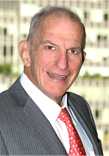
Tort reform, such as what Texas has implemented, has “cut off” accessibility to the courts for some, argued Royal Furgeson, Jr., a retired federal judge who is dean of UNT’s Dallas College of Law.
“We have decided through tort reform that doctors are not accountable and can’t be sued,” he told the audience.
The diminished role of juries means the United States is “not honoring” the 7th amendment of the U.S. Constitution, which guarantees the right to jury trials in civil cases.
“When the jury comes in, everything gets sunlight,” Furgeson said. “That’s where all the court system gets sunlight.”
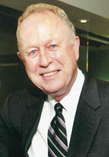
Furgeson, like Susman and other panelists, stressed he did not have a problem with arbitration per se. But, he added, court trials are how the law develops.
“With arbitration, there is no development of law,” he said. “Development of law is important.”
However, David Folsom, who retired as chief judge of the Eastern District in 2012, noted that jurists face ever-growing workloads.
Now a partner in Texarkana with Jackson Walker, Folsom said that when he sees all the pending motions in cases, “I’m reminded why I took retirement.”
The moderator of the panel was Michael Truncale, a partner at Orgain Bell & Tucker.
What Five In-House Lawyers say, but may not Believe, About the Eastern District
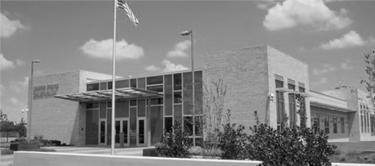
By Jeff Bounds
While serving on a conference panel Thursday, Ray Wood told an audience of scores of lawyers and judges that an Eastern District of Texas requirement concerning letter briefs was “too restrictive.”
Wood, chief patent counsel at ZTE, may actually believe that requirement is too restrictive. Or he might not.
That sentiment may actually be the view of Kenneth Korea, senior vice president and head of the US IP Center, at Samsung Electronics. But then … it may not either.
Could it be that Kevin Fillip, vice president & general counsel at ST Microelectronics Inc., is actually the one who thinks the letter briefing requirement in the District is too restrictive? It could.
Then again, maybe Karen Robinson, associate general counsel and director of litigation at Adobe, might is one who has the concern about letter briefs. Evelyn Chen, senior counsel at Ericsson, could be the person as well.
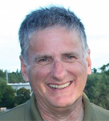
This peculiar guessing game surfaced in a public setting at the annual bench-bar conference of the Eastern District because Wood, Korea, Fillip, Robinson and Chen all were serving on a panel that was supposed to be about “irks and the parts that work” of the District’s litigation system.
Because Eastern District judges might be watching the panel, those five in-house attorneys wanted to avoid criticizing how the jurists are running things and possibly incur their wrath.
So everyone on the panel played pretend.
The panels’ co-moderator, Natalie Bennett, an associate in the Washington, D.C. office of McDermott Will & Emery, kicked the game off by explaining to the audience that the panelists had gotten together beforehand and shared their true thoughts about the District.
Then, they compiled what Bennett called a “script,” through which one person on the panel would relate the views of other panelists.
Bennett noted after the game ended that panelists sometimes gave voice to their own opinions, and sometimes shared other people’s opinions from the script. (We did not think to ask if that statement was Bennett’s own, or whether it belonged to the panel’s co-moderator, Josh Thane, of Haltom & Doan.)
In short, the panelists gave voice to issues they see with the Eastern District, but avoided taking responsibility for them.
“You may not know when exactly the deadline is for filing a summary judgment motion,” Fillip said, sharing a viewpoint that could in fact have been Robinson’s.
“Mediation is helpful,” retorted Korea, reflecting what could have been something that Chen truly believes but did not want to annoy a judge with.
The game of pretend raised interesting questions, such as why panelists would be so concerned with voicing criticisms of the District’s litigation process.
As reported yesterday, the District has a Local Rules Advisory Committee through which lawyers provide suggestions on improving how the District does things.
More importantly, the I-said-it-but-maybe-did-not-mean-it game raises a broader, more significant issue:
Why hold the damn panel in the first place?
Clarity Counts in Patent Damages Models, Judges Say
By Jeff Bounds
PLANO (Oct. 22) – Attorneys on both the plaintiff and defense side of patent lawsuits need to make it easier for judges to determine fair damages that alleged infringement has caused, a panel of jurists said Thursday.
Speaking at the annual bench-bar conference for the Eastern District of Texas, William Bryson, Senior Circuit Judge of the U.S. Court of Appeals for the Federal Circuit, said damages models need to answer two essential questions:
1) What is the value of what the plaintiff had taken away through the infringement?
2) What would the plaintiff have made if not for the infringement?
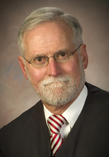
“Just focus on those two questions,” he said. “Counsel must make sure they have a solid, sound economic damages model. And they must have an economic theory of damages. If you have that, you will get through the Federal Circuit in good shape. If not, you will be in trouble.”
The issue of damages has come onto the Federal Circuit’s radar because of a number of infringement awards worth hundreds of millions of dollars in the last few years, Bryson said.
“More attention is being paid to damages assessments,” he said.
Eastern District judges on the panel conceded they are struggling with a damages issue called “apportionment” – which is essentially carving out the damages from infringement on a patented invention that is part of a bigger piece of machinery with features that the plaintiff’s patent does not cover.
An example would be the windshield wipers on a car, according to Leydig Voit & Mayer.
“There are no magic ways to get there,” said Eastern District judge Rodney Gilstrap, the busiest patent jurist in the country. “It’s a complicated process. Apportionment within multi-component devices is where I’d like some guidance from (courts) above, but I don’t see it.”
Technical experts can help in apportionment questions, added Judge John Love of the Eastern District. “I don’t see them a lot in the damages models that are presented to me. Frankly, I wish they were. They’re helpful, if not necessary, in talking about what the value of a component is.”
Steven Williams, a shareholder at McDole & Williams in Dallas, said it’s important for attorneys to get their technical witnesses talking to their economic counterparts early in a case.
“Technical experts can help the economic experts in apportionment,” he said. “Today, damages are front and center of what’s being addressed at the beginning of a case.”
Appraisals performed in fields like oil and gas royalties often use models that are relatively easy to get one’s arms around, said Judge Ron Clark, Chief Judge of the Eastern District.
“Our court system is the only one that’s gone off on a convoluted one,” he said.
The moderators of the panel were Alan Ratliff of StoneTurn Group and Bo Davis of the Davis Firm.
Judges, Lawyers in Eastern District Fear Congressional Action on Small Plaintiffs
By Jeff Bounds
PLANO (Oct. 22) – Judges and lawyers alike in the Eastern District of Texas must do more to combat patent plaintiffs that seek small settlements – before Congress steps in.
That was the message from a panel discussion Thursday at the District’s bench bar conference in Plano.
The issue, experts said, is what Leonard Davis, the Eastern District’s former chief judge, characterized as “cost of defense” patent suits, meaning plaintiffs that ask for less than what the defendant would have to spend to defend itself in court.
Doug Cawley, a McKool Smith partner who moderated the panel, said that studies have suggested a defendant will spend about $750,000 to defend a patent suit that seeks $1 million or less.
Davis agreed with U.S. District Judge Barbara M.G. Lynn, who told the audience the problem of abusive litigation “exists in the minds of Congress, but not in big numbers of litigation. We have the tools to deal with it.”
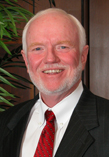
Davis, now with Fish & Richardson, recalled a law school precept that bad facts make bad law.
“Abusive litigation creates fodder for those who want to modify the system for their own gain,” he said.
Mike Jones, whose East Texas practice at Potter Minton centers on defense work, noted the issue for clients is how to economically defend themselves against small patent cases.
“The challenge for the defense bar is to talk about five-figure fees, not six-figure fees, and to have the cases handled by younger lawyers.”
Davis noted that in recent years, the Eastern District has implemented so-called “Track B” for smaller cases. That involves tactics like faster disclosure between the parties as a means to try to get the cases disposed of faster.
A pair of visiting judges, New York’s Shira Scheindlin and Southern California’s Cathy Ann Bencivengo, said they do not see a large volume of abusive litigation. But both worried about how Congress might complicate patent suits.
Vencivengo said she is concerned that Washington’s changes could result in a surge in early motions from defendants to dismiss plaintiffs’ cases under what’s known as Rule 12(b)(6). That allows judges to throw out cases because plaintiffs have failed to make a legal claim for which the court can provide some type of relief.
“I’ll be stuck in Rule 12 hell from here to eternity,” Vencivengo said. “It won’t streamline the process. It will make it go slower.”
Scheindlin said judges need rules, such as limited discovery and quick disclosures between parties, that can get small cases concluded quickly.
“We as judges need a different way to do it,” she said. “We need to find the dispositive issues and move on.”
How Eastern District Adopted California Patent Rules
By Jeff Bounds
PLANO (Oct. 21) – A major reason why the Eastern District of Texas is the top venue for patent litigation nationwide is its local rules, which attorneys say bring efficiency in getting cases tried and concluded.
Attendees at the 19th annual bench-bar conference for the District heard an interesting story Wednesday about how East Texas wound up adopting those rules — primarily from the Northern District of California, no less.
The origin of the California connection was Judge John Ward, who retired from the Eastern District bench in 2011.
Jennifer Ainsworth, a shareholder at the Tyler law firm, Wilson Robertson & Cornelius, relayed the story while participating on a panel discussion about the Eastern District’s patent rules with Michael Smith of Siebman Burg Phillips & Smith in Marshall.
Ainsworth became familiar with Ward’s role in the Eastern District’s patent rules through her service on the Local Rules Advisory Committee, which provides non-binding input to the District’s judges.
“What makes our District special is we’ve been on the forefront in procedures, which drives so much of what we do,” she said.
As Ainsworth relayed the story, before joining the bench, Ward had tried his first patent case when he represented automaker Hyundai in a case against Dallas-based Texas Instruments before Judge Thad Heartfield.
Not long after that, Ward joined the Eastern District bench in September 1999 – and found a fair number of patent cases assigned to him, Ainsworth said.
It didn’t take long for the new judge to see some of the issues with how the Eastern District’s then-rules impacted patent cases.
Ward ran into what he and one of his clerks, future magistrate judge Charles Everingham, felt were rule-related inefficiencies and other issues when Ward handled his first “Markman” hearing. That hearing is part of the process judges use to determine the meanings of key words in a patent’s claims.
Ward wound up getting a suggestion from counsel from the San Francisco area that he might want to look at the Northern District of California’s rules.
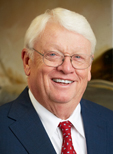
Ward wound up adopting many of those rules, albeit with some modifications, such as shortening certain time-frames, Ainsworth said.
The rules Judge Ward instituted in his court made him popular with attorneys, who sought to have him hear their cases because they felt they could get their litigation resolved faster.
Ultimately, other Eastern District judges, such as then-Chief Judge Leonard Davis, wound up adopting Ward’s version of rules. Before long, Davis made those rules district-wide.
To this day, the Eastern District’s rules play a central role in how cases get through those courts.
The rules “can be your friend or your enemy,” Ainsworth told the crowd. “The more time you can spend on knowing the rules, the better, even if it is complicated.”
Ainsworth wasn’t the only person on the panel to concede how arcane the the subject of local patent rules can be.
Moderator Wes Hill, a partner at Ward Smith & Hill, realized the late-afternoon crowd might be thinking about the next phase of the conference, a tasting of Texas Bourbons.
“If the topic of this panel won’t drive you to drink, nothing will,” he said.
More Federal Judges Needed in Sherman
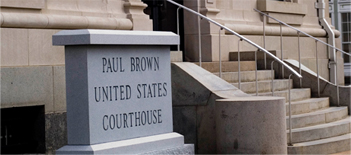
By Jeff Bounds
PLANO (Oct. 21) – The annual Eastern District of Texas 2015 Bench Bar Conference started Wednesday at the Plano Marriott Legacy Town Center and The Texas Lawbook is there and providing complete coverage.
Kicking off this year’s festivities was an economist, Dr. Ray Perryman, who warned the early attendees about the dangers of having insufficient numbers of judges on the Eastern District bench as the region, particularly the Sherman division, experiences rapid economic growth.
Judge Amos Mazzant is largely holding down the fort in Sherman, which has one vacancy that Congress is yet to fill. In addition, Judge Richard Schell of Plano went on senior status earlier this year.
Perryman noted that his Waco-based economics forecasting firm, The Perryman Group, recently projected that the Sherman division’s population will overtake that of the Dallas division by 2037. (The Texas State Data Center has arrived at the same conclusion, but uses somewhat different methods to get there, Perryman noted.)
“A lot of things are in motion that drive growth to this area,” Perryman said. “A lot of it is corporate growth.”
Toyota, of course, has announced that it will employ 4,000-plus people in Plano as part of a relocation of much of its North American operations. What gets less attention, Perryman noted, is that other companies will be seeking to set up shop in these parts simply because Toyota is here.
As more companies in fields like technology and specialized manufacturing take root and grow here, they will have different types of legal needs than, say, farmers do, Perryman said.
“Defining the rights to a piece of land is different than for the rights to a product with thousands of pieces of intellectual property,” he said.
Similarly, the contract issues that large companies have vary considerably from the contractual disputes that surface in an agrarian-based economy.
All told, Perryman said, if the Sherman division lacks enough judges, that will hamper economic growth in these parts.
The converse is true as well. If the existing judicial vacancy in the Sherman division gets filled, the region it covers will see an incremental growth of 49,700 jobs by 2030, according to his firm’s forecasts.
If the Sherman division both gets the vacancy filled and gets another judge to boot, its employment will grow incrementally by 94,600 jobs by 2030, Perryman Group forecasts say.
“The way the area is doubling, the need for judicial services will more than double, because of the kind of growth we’re experiencing,” he said.
© 2014 The Texas Lawbook. Content of The Texas Lawbook is controlled and protected by specific licensing agreements with our subscribers and under federal copyright laws. Any distribution of this content without the consent of The Texas Lawbook is prohibited.
If you see any inaccuracy in any article in The Texas Lawbook, please contact us. Our goal is content that is 100% true and accurate. Thank you.
